
Mountain Heights Academy Instructional Design OER; Presented by Julie Crisp

Mountain Heights Academy Instructional Design OER; Presented by Julie Crisp
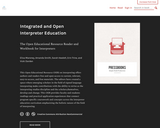
The Open Educational Resource Reader and Workbook for Interpreters
Short Description:
This Open Educational Resource (OER) on interpreting offers authors and readers free and open access to current, relevant, easy-to-access, and free materials. The editors have created a space where emerging scholars in the field of signed language interpreting make contributions with the ability to revise as the interpreting studies discipline and the scholars, themselves, develop and change. This OER provides faculty and students readings and practical application experiences that connect program specific coursework and concepts across the interpreter education curriculum emphasizing the holistic nature of the field of interpreting.
Long Description:
The purpose of this OER project is to develop current materials targeting newer scholars as authors who have conducted current research, but have not had an opportunity to publish. In this project, each of the five editors will develop and/or compile a collection of reading and ancillary materials on a specific content area. Contributions will be made in written English or digitally recorded American Sign Language (ASL). All contributors retain rights to their own work and may reuse in traditional and transformative ways as OER approaches continue to advance. As authors continue to grow, they are encouraged to remix (create new content over time) and redistribute materials they have developed.
The goal of this OER is to offer faculty and students readings and practical application experiences that connect program specific coursework and concepts across the interpreter education curriculum emphasizing the holistic nature of the field of interpreting.
Additionally, there are different needs for those students who are native English speakers and those who are native/primary users of ASL. We also envision other interpreter educators using the materials. Thus, we expect that the readings and activities will be revised (adapted) as needed.
Courses and topics for this project include interpreter mindset, pre-interpreting skills and knowledge, technical skills, reflective practice, linguistics, cultural intelligence, multicultural competencies, meaning transfer, and coaching.
Word Count: 38589
ISBN: 978-1-63635-025-7
(Note: This resource's metadata has been created automatically by reformatting and/or combining the information that the author initially provided as part of a bulk import process.)

Photo: https://www.flickr.com/photos/jharris0221/3229873359In this lesson, students will learn about and practice various ways to integrate quotations into their writing.

With our tutorial, we want to send everyone into the interview room (or potentially virtual interview room) prepared and confident. You know you have skills and talents to offer to the employer, you know you are the best fit for the position, so now the preparation you complete for that interview will ensure the employer knows it too.We break down the four phases of an interview process: Preparation, What to Wear, How to Present Your Best Self, and How to Follow Up.

Students will be learning about intrinsic and extrinsinc motivation. This lesson can be completed individually or as a group/partner.

Preface
We developed the first edition of this Anatomy and Physiology textbook in 2020,
shortly after the COVID-19 Pandemic began. Reducing the costs of study materials
would help rising Speech-Language Pathologists (SLPs) progress toward their
certification without interruptions due to financial setbacks. Developing the Open
Education Resource (OER) Anatomy and Physiology textbook was our first step in
an ongoing effort to support future SLPs.
A large part of this book derived from various OpenStax textbook series. OpenStax
is a nonprofit organization based out of Rice University in Houston, Texas. Its open
resource textbooks cover a vast amount of information for two-semester core
curriculum courses in various disciplines. OpenStax generously permits educators
to use their books' content in part or in whole to develop textbooks customized for
each instructor's course structure. The present textbook's OpenStax content is colorcoded
in black ink. Additional information concerning communication sciences and
disorders appears in blue ink. The original OpenStax texts are accessible free of
charge at https://openstax.org/subjects. This textbook includes applicable content
from the OpenStax books Anatomy and Physiology, Psychology, and Biology for
AP Course.
This textbook contains various images produced by the third author, renowned Dr.
Willard R. Zemlin (1929-1998), with permission. Dr. Zemlin was one of the most
influential scholars in anatomy and physiology concerning communication sciences
and disorders. Dr. Zemlin's son, Mr. Karl Zemlin, kindly sharpened numerous images
for this book to provide high-resolution pictures. At Mr. Zemlin's suggestion, Dr.
Zemlin is included as a co-author of this edition. Mr. Zemlin expressed his
appreciation for the generosity of those who donated their bodies to science
throughout his father's studies. A comprehensive collection of Dr. Zemlin's work is
accessible at his memorial website http://zemlin.shs.uiuc.edu/zemlinBio.htm of
which Mr. Zemlin is the webmaster.
The current edition also incorporates additional images from Wiki Common. Wiki
Common offers various information under Creative Common (CC) licenses, allowing
the use and remix of the materials. This textbook would not have been possible
without the contributions of OpenStax, Mr. Karl Zemlin, and generous providers of
Wiki Common resources. We sincerely appreciate their generosity. Also, the authors
would like to acknowledge the assistance of the students who used the initial edition
of this book last year. They provided valuable comments from the learners’ point of
view for refining the content. We have made this textbook available for our future
colleagues to gain entry-level scientific knowledge applicable for serving individuals
with communication disorders.
June S. Levitt, Ph.D., LDT, CCC-SLP
Sarah L. Guigneaux, M.S., CCC-SLP
Willard R. Zemlin, Ph.D.
May 2021
Contact: OpenResource2020@gmail.com
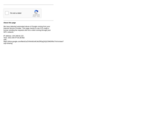
Second Edition
Preface
We developed the first edition of this Anatomy and Physiology textbook in 2020, shortly after the COVID-19 Pandemic began. Reducing the costs of study materials would help rising Speech-Language Pathologists (SLPs) progress toward their certification without interruptions due to financial setbacks. Developing the Open Education Resource (OER) Anatomy and Physiology textbook was our first step in an ongoing effort to support future SLPs.
A large part of this book derived from various OpenStax textbook series. OpenStax is a nonprofit organization based out of Rice University in Houston, Texas. Its open resource textbooks cover a vast amount of information for two-semester core curriculum courses in various disciplines. OpenStax generously permits educators to use their books' content in part or in whole to develop textbooks customized for each instructor's course structure. The present textbook's OpenStax content is color-coded in black ink. Additional information concerning communication sciences and disorders appears in blue ink. The original OpenStax texts are accessible free of charge at https://openstax.org/subjects. This textbook includes applicable content from the OpenStax books Anatomy and Physiology, Psychology, and Biology for AP® Course.
This textbook contains various images produced by the third author, renowned Dr. Willard R. Zemlin (1929-1998), with permission. Dr. Zemlin was one of the most influential scholars in anatomy and physiology concerning communication sciences and disorders. Dr. Zemlin's son, Mr. Karl Zemlin, kindly sharpened numerous images for this book to provide high-resolution pictures. At Mr. Zemlin's suggestion, Dr. Zemlin is included as a co-author of this edition. Mr. Zemlin expressed his appreciation for the generosity of those who donated their bodies to science throughout his father's studies. A comprehensive collection of Dr. Zemlin's work is accessible at his memorial website http://zemlin.shs.uiuc.edu/zemlinBio.htm of which Mr. Zemlin is the webmaster.
The current edition also incorporates additional images from Wikimedia Commons. Wikimedia Commons website offers various information under Creative Common (CC) licenses, allowing the use and remix of the materials. This textbook would not have been possible without the contributions of OpenStax, Mr. Karl Zemlin, and generous providers of Wiki Common resources. We sincerely appreciate their generosity. Also, the authors would like to acknowledge the assistance of the students who used the initial edition of this book last year. They provided valuable comments from the learners’ point of view for refining the content. We have made this textbook available for our future colleagues to gain entry-level scientific knowledge applicable for serving individuals with communication disorders.
June S. Levitt, Ph.D., LDT, CCC-SLP
Sarah L. Guigneaux, M.S., CCC-SLP
Willard R. Zemlin, Ph.D.
May 2021
Contact: OpenResource2020@gmail.com

Word Count: 48231
(Note: This resource's metadata has been created automatically by reformatting and/or combining the information that the author initially provided as part of a bulk import process.)

This activity is a guided demonstration where students create light up quiz boards to demonstrate electricity vocabulary.

Textbook covering topics orienting undergraduate-level students to the major engineering disciplines (civil, computer and electronic, and mechanical) and professionalism within these disciplines.

This 4-part course is modified from a FORCE11 Scholarly Communication Institute hosted in 2018. It consists of a syllabus, slides, and instructional strategies designed to introduce open education to novices while also developing a more critical and nuanced understanding of complex issues within open education. Concepts or pieces can be reconfigured or adapted to fit other contexts, including workshops, trainings, and online instruction. The first three days of the course provide a foundation by defining OER and Creative Commons, delineating differences between affordable course material solutions and OER, exploring various OER repositories and evaluation tools, and learning about open pedagogy models. The fourth day of the course uses this foundation to explore and interrogate more complex issues, including labor, technocracy, accessibility, openwashing, and the intersection between privacy and openness. We have structured the content so that anyone with some background in scholarly communication (but perhaps no familiarity with open education) is able to learn from the resources firsthand or efficiently adapt them to teach a Library and Information Science course that covers these topics.
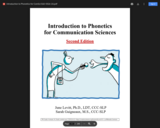
This book, titled "Introduction to Phonetics for Communication Sciences," has been specifically designed to cater to the undergraduate phonetics course in the field of communication sciences and disorders. Its primary goal is to enable students to grasp the intricacies of speech sounds by utilizing their knowledge of anatomy and physiology, which are directly relevant to speech production. Consequently, this book incorporates a selection of foundational information extracted from an OER anatomy and physiology textbook by Levitt, Guigneaux, and Zemlin (2021), "Introduction to Anatomy and Physiology for Communication Sciences, Edition 2.1" for review.
The purpose of this textbook is to comprehensively address the coursework requirements, allowing for the customization of learning objectives to assist aspiring Speech-Language Pathologists (SLPs) effectively. In response to the onset of the COVID-19 Pandemic in 2020, the authors took the initiative to create their first Open Educational Resource (OER) textbook on anatomy and physiology. By reducing the financial burden associated with study materials, this initiative aims to facilitate the progress of rising SLPs toward their certification without any interruptions caused by financial constraints. The authors view the development of OER materials as an ongoing endeavor driven by their commitment to supporting future colleagues in the field.
This book incorporates images, illustrations, and information from various OER that allow others to adopt or remix their information in part or whole. The information from other OER sources is color-coded in black ink, and the content developed by the authors is presented in blue ink. Citations for all images, illustrations, and information that the authors do not originate are provided on each page. The authors sincerely appreciate the work of those who have shared their valuable resources under Creative Commons (CC) license.
The authors of this textbook aspire to ignite a sense of fascination in beginning learners as they delve into the captivating realm of speech production. With this goal in mind, the authors have made this textbook readily accessible to future colleagues who seek to acquire foundational scientific knowledge that can be applied in serving individuals with communication disorders.
June S. Levitt, Ph.D., LDT, CCC-SLP
Sarah L. Guigneaux, M.S., CCC-SLP
May 2024

Short Description:
This study guide is designed to accompany the Introduction to Psychology – Ist Canadian Edition open text by Jennifer Walinga and Charles Stangor. For each chapter it summarizes the learning objectives and presents multiple-choice, true-false and fill-in-the-blank tests of the material covered. It provides links to resources to enable students to deepen their understanding of key topics and to explore related issues. Finally, it offers suggestions for hands-on activities relevant to each chapter.
Long Description:
This study guide is designed to accompany the Introduction to Psychology – Ist Canadian Edition open text by Jennifer Walinga and Charles Stangor (https://open.bccampus.ca/find-open-textbooks/?uuid=8390d51e-0efe-493c-881c-cf86852a612f&contributor=&keyword=&subject=Psychology). For each chapter it summarizes the learning objectives and presents multiple-choice, true-false and fill-in-the-blank tests of the material covered. It provides links to resources to enable students to deepen their understanding of key topics and to explore related issues. Finally, it offers suggestions for hands-on activities relevant to each chapter.
Word Count: 31587
(Note: This resource's metadata has been created automatically by reformatting and/or combining the information that the author initially provided as part of a bulk import process.)

Introduction to Sociology
There is perhaps no course more immediately impactful and relevant to students’ lives than sociology. This course provides a comprehensive overview of key sociological topics and encourages students to think critically about the social world. Students develop the sociological imagination and examine society through each of the main sociological paradigms. The course includes embedded practice questions with targeted feedback to encourage reflection and application, as well as videos, discussions, and assignments.
Key topics include research, culture, socialization, society and groups, deviance and crime, stratification and inequality, race and ethnicity, gender, sex, and sexuality, marriage and family, religion, education, health and medicine, aging and the elderly, government and politics, work and the economy, population and urbanization, and social change. Faculty members may readily adapt the course’s OER content to include new developments and research to equip students with what they need to have success in their sociological journey.
Contributors
This course, based on the OpenStax 2e Sociology text, was developed by Lumen Learning and includes additional noteworthy contributions by the Lumen Learning team and:
What’s New?
The 2019 edition of Introduction to Sociology includes the following significant improvements and enhancements:
Improved course organization
Modules are more consistent in size. This means some modules have been separated out from the previous version of the course. This enables greater instructor flexibility and more manageable learning for students.
Content is organized around specific, granular learning outcomes, which are listed at the top of each page.
Practice questions, try it questions, and quiz questions all align with learning outcomes.
Improved course content
Course content was reviewed for accuracy and currency, then updated with modern examples, news, and research.
“Try It” embedded practice questions for every learning outcome. This means that students learn about concepts and then immediately check their understanding with applied practice.
“Watch It” embedded videos that explain and reiterate key concepts throughout the course.
Most videos come from CrashCourse Sociology, although several others are included from various sources such as Khan Academy and Sociology Live!
Discussions and Assignments for every module
As a Waymaker course, this is customizable and delivered with user-friendly personalized learning tools to strengthen engagement and student success. There are formative self-check assessments and summative quiz questions that can be imported directly into the LMS.
Pacing
The Introduction to Sociology course contains eighteen modules. Since many instructors choose not to teach every module, sometimes it works well to cover roughly one module per week for a sixteen-week semester. Although the modules are generally similar in size, some of the content is lighter in certain modules or more dense in others, so it may make sense to combine some modules in one week or draw out other modules over several weeks. See the “Pacing” page inside of faculty resources for more information and suggestions.
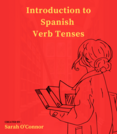
This is an introduction to Spanish verb tenses, made up of notes I devised for my students.

Geographic Information System (GIS) software manages data that represent the location of features (geographic coordinate data) and what they are like (attribute data); it also provides the ability to query, manipulate, and analyze those data. Because GIS allows one to represent social and environmental data on maps, it is a powerful tool for analysis and planning in various fields. This course is meant to introduce students to the basic capabilities of GIS.
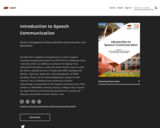
Short Description:
Introduction to Speech Communication is used to support teaching, learning and research for SPCH 2713 at Oklahoma State University (OSU). In addition to inclusion of original work authored by the editors to meet the needs of their course at OSU, the editors adapted portions of Exploring Public Speaking: 4th Edition, Stand Up, Speak Out, and Fundamentals of Public Speaking. Please see the Acknowledgements chapter for full citations. We at Oklahoma State University Libraries acknowledge our gratitude for the expertise and generosity of the scholars at Affordable Learning Georgia, College of the Canyons, the Open Education Network and elsewhere for creating and sharing customizable versions of their work.
Long Description:
This book, Introduction to Speech Communication, is used to support teaching, learning and research for SPCH 2713 at Oklahoma State University (OSU). This resource has been customized for use at OSU by faculty members Sarah E. Hollingsworth, Kathryn Weinland, Sasha Hanrahan, Mary Walker, Terrisa Elwood and Megan Linsenmeyer. In addition to inclusion of original work authored by the editors to meet the needs of their course at OSU, the editors adapted and mixed together portions of Exploring Public Speaking: 4th Edition, Stand Up, Speak Out, and Fundamentals of Public Speaking. Please see below for full citations of each of these works. We at Oklahoma State University Libraries acknowledge our gratitude for the expertise and generosity of the scholars at Affordable Learning Georgia, College of the Canyons, the Open Education Network and elsewhere for creating and sharing customizable versions of their work.
Word Count: 342859
(Note: This resource's metadata has been created automatically by reformatting and/or combining the information that the author initially provided as part of a bulk import process.)
The development of systems and network concepts for students can begin with this highly interactive inquiry into cell phone networks. Cell phones serve as a handy knowledge base on which to develop understanding. Each cell phone represents a node, and each phone’s address book represents an edge, or the calling relationships between cell phones. Students conceptualize the entire cell phone network by drawing a graphic that depicts each cell phone in the class as a circle (node) connected by directional lines (edges) to their classmate’s cell phones in their address book. Students are queried on the shortest pathway for calling and calling pathways when selected phones are knocked out using school and classroom scenarios.
Students then use a simulation followed by Cytoscape, visually graphing software, to model and interrogate the structure and properties of the class’s cell phone network. They investigate more advanced calling relationships and perturb the network (knock out cell towers) to reexamine the adjusted network’s properties. Advanced questions about roaming, cell towers and email focus on a deeper understanding of network behavior. Both the paper and software network exercises highlight numerous properties of networks and the activities of scientists with biological networks.
Target Audience:
This is an introductory module that we recommend teaching before each of our other modules to give students a background in systems. This module can be applied easily to any content area and works best as written for students between 6th and 12th grades but can be adapted for other ages. The lessons work best when in-person with students. If you are looking for an Introduction to Systems for remote learning, please use our Systems are Everywhere module.

This social media literacy unit introduces students to foundational skills in analyzing images and social media posts. It also reenforces critical thinking questions that can be applied to various forms of media. This unit was taught to 9th grade students but is easily adaptible to a range of secondary classrooms. It was also taught in conjunction with another unit focused on social media platforms and content.
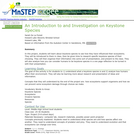
This activity is a project in which students research keystone species and report on specific species to the class.